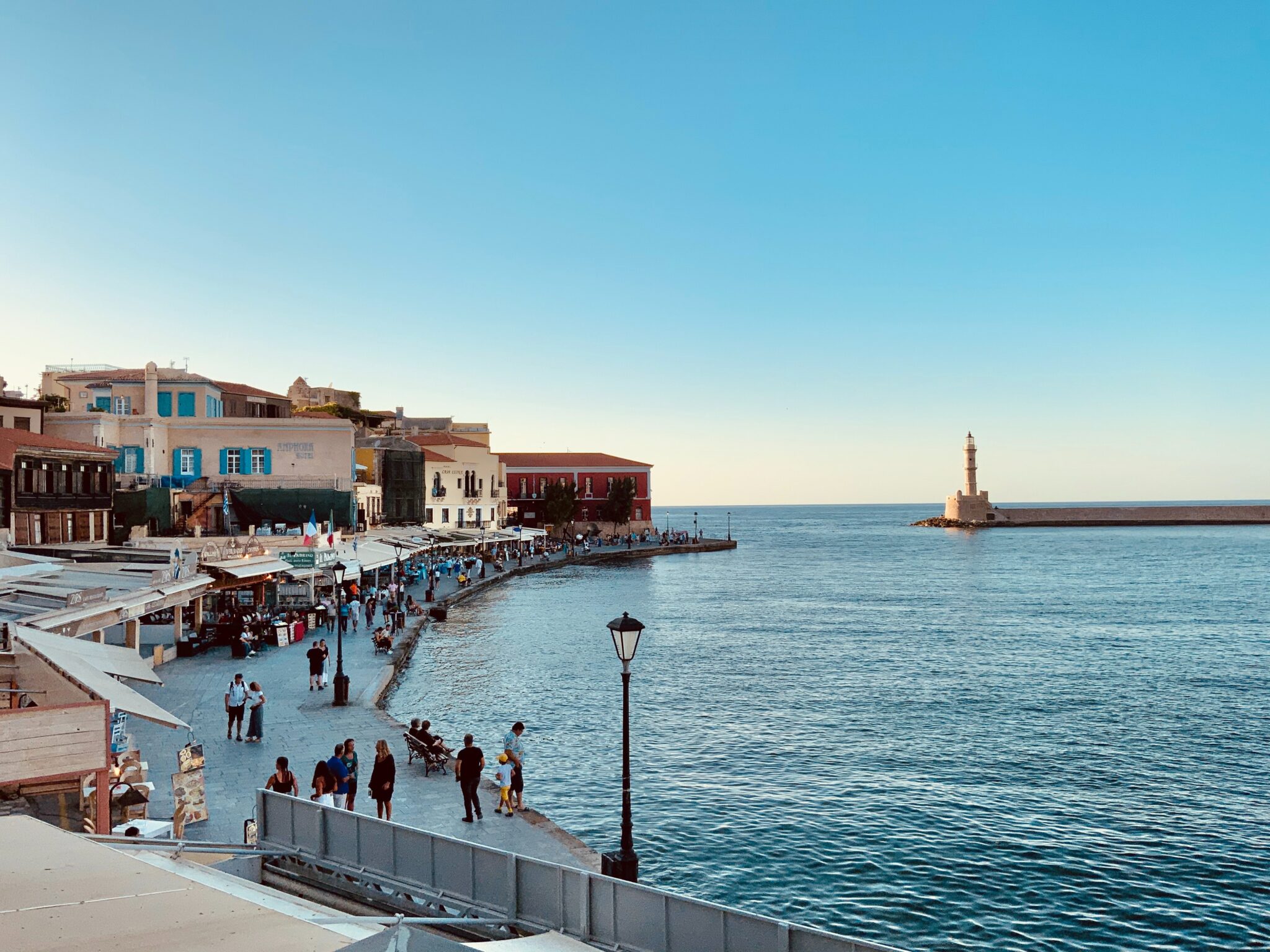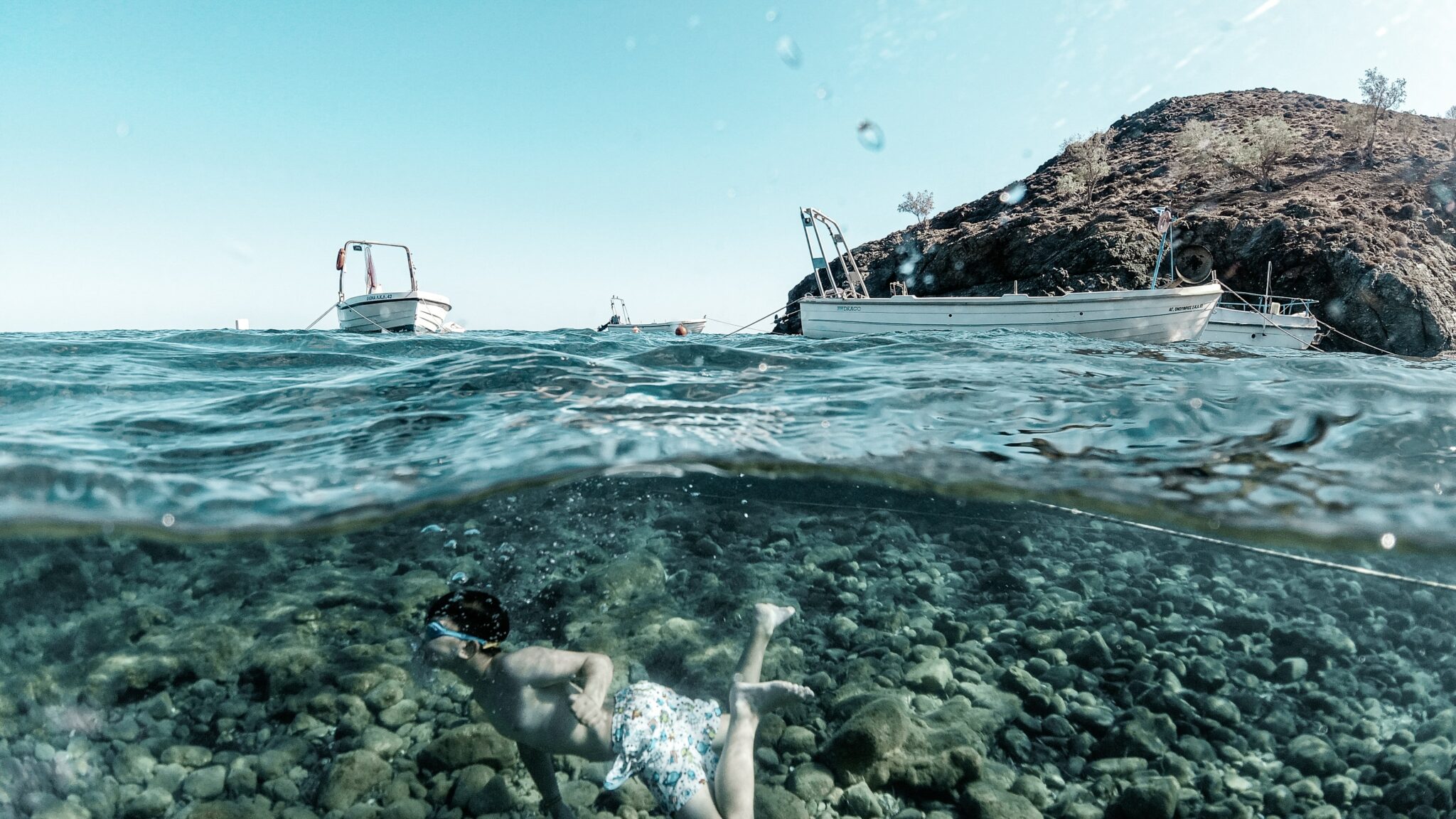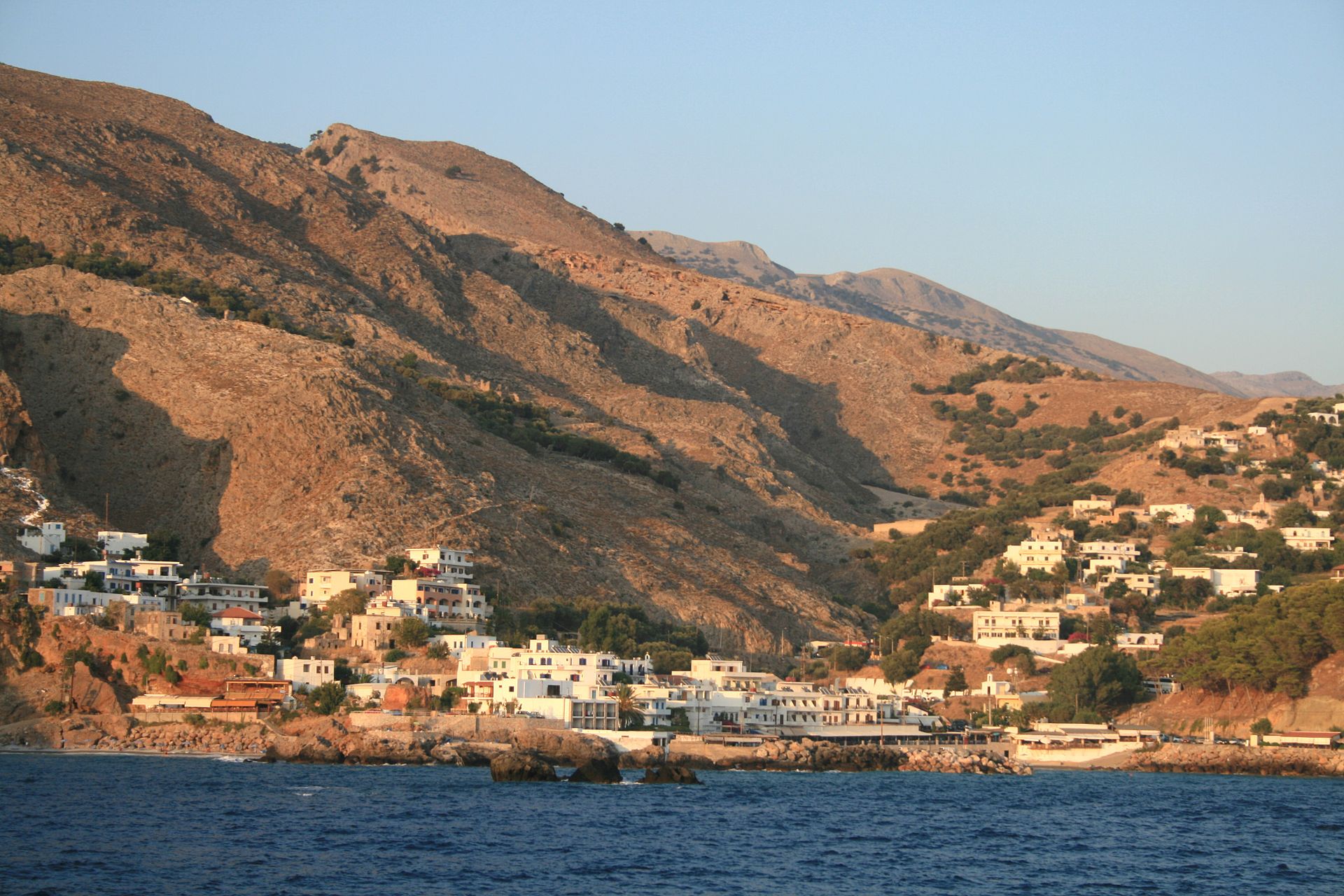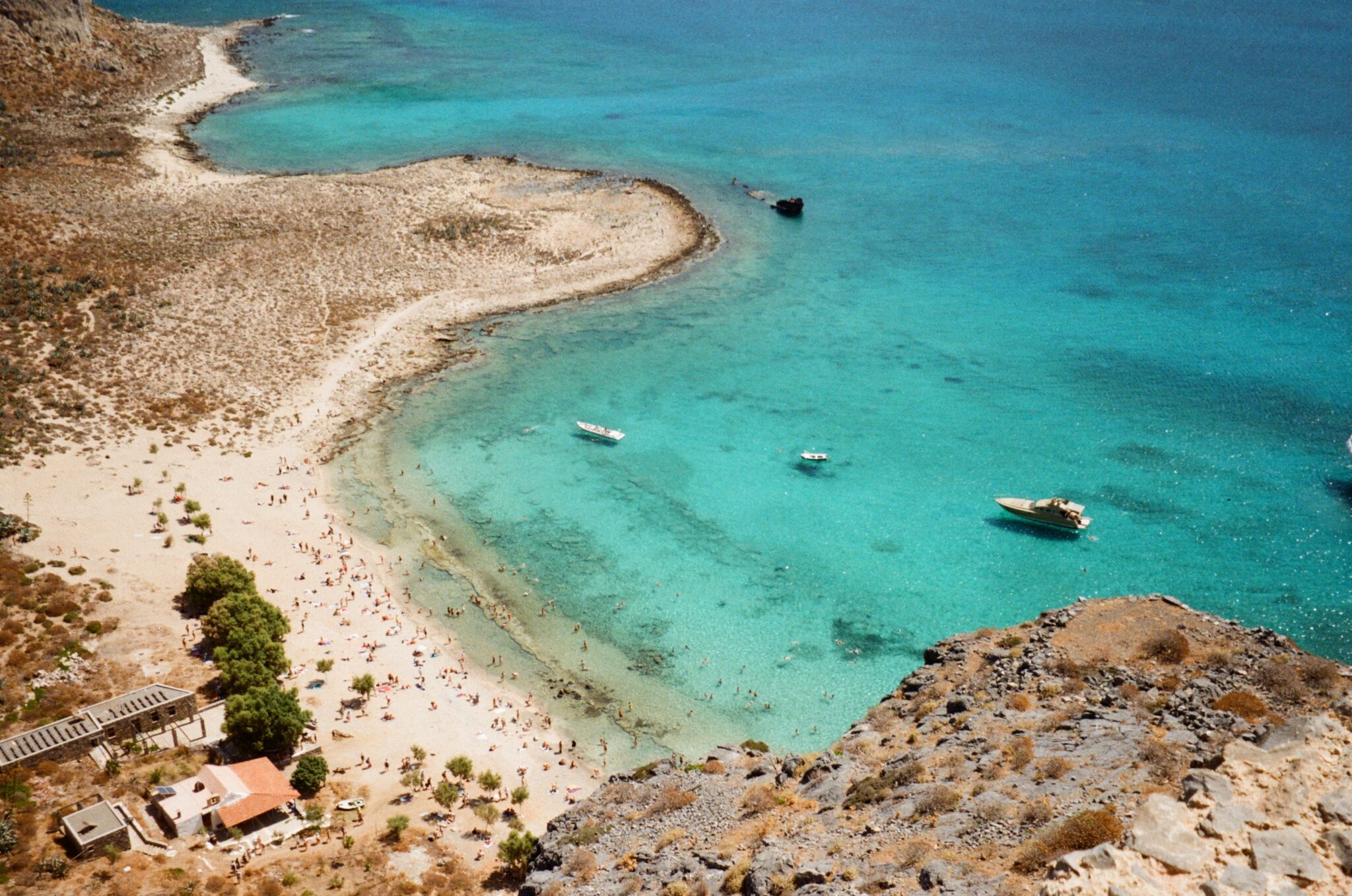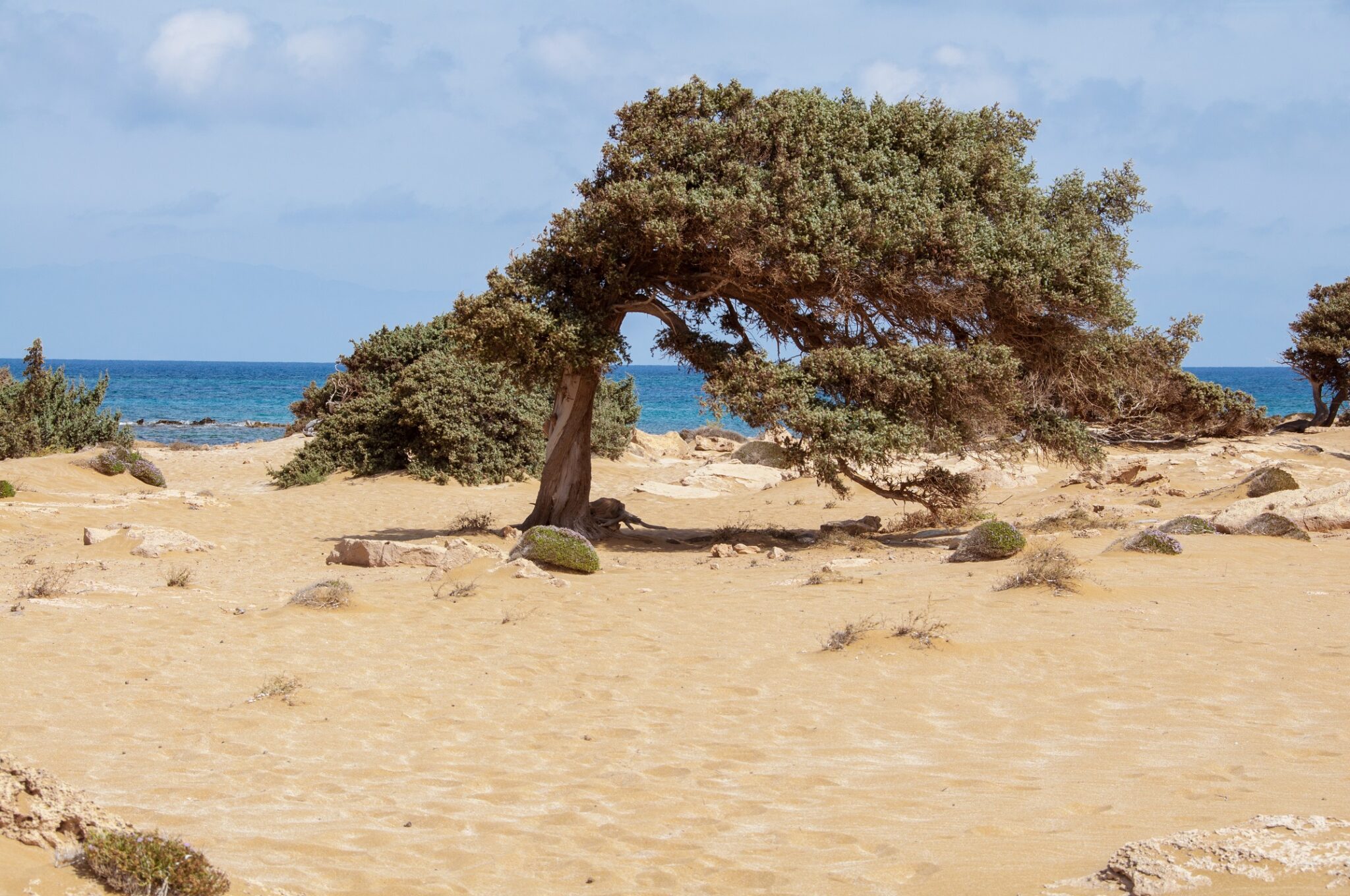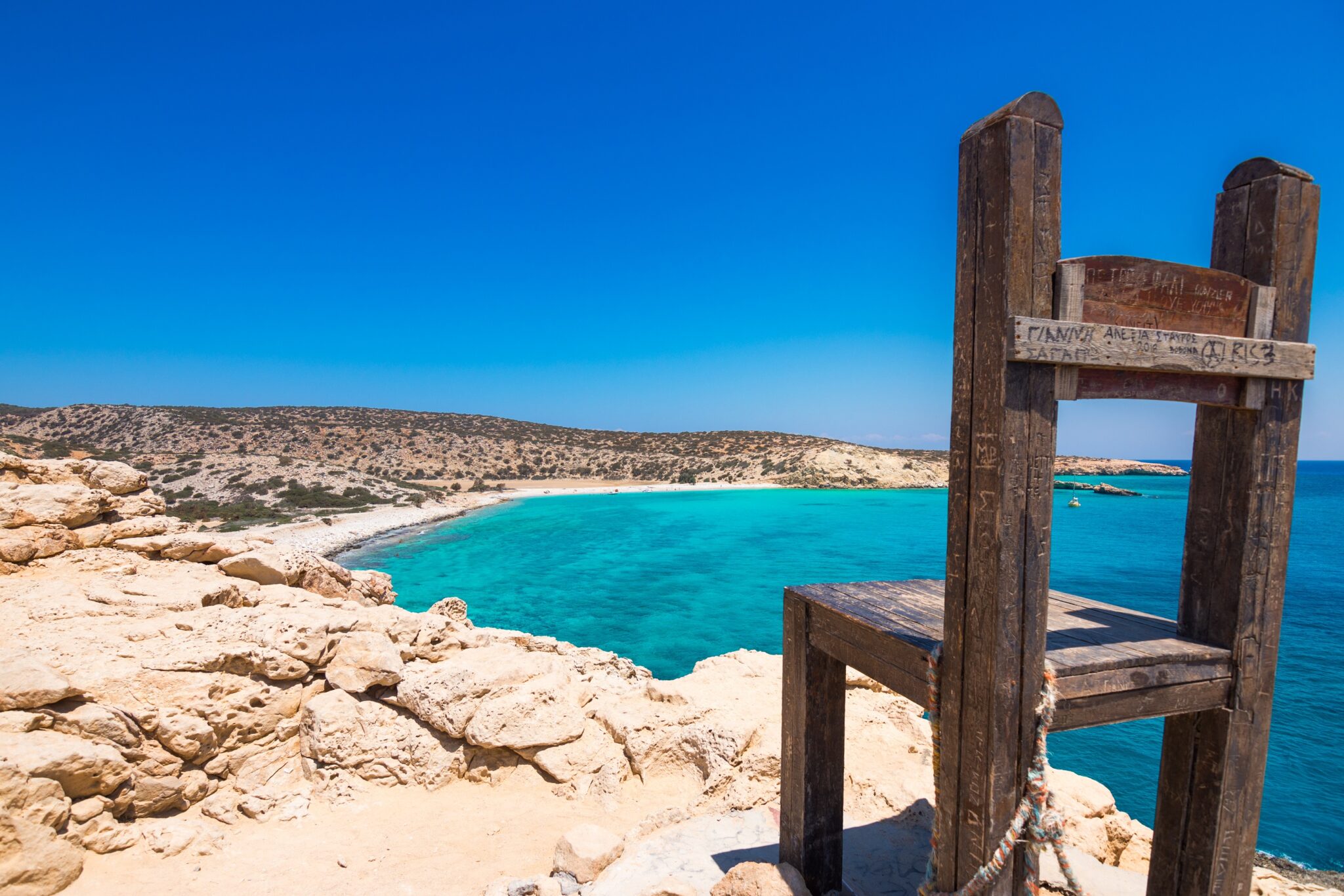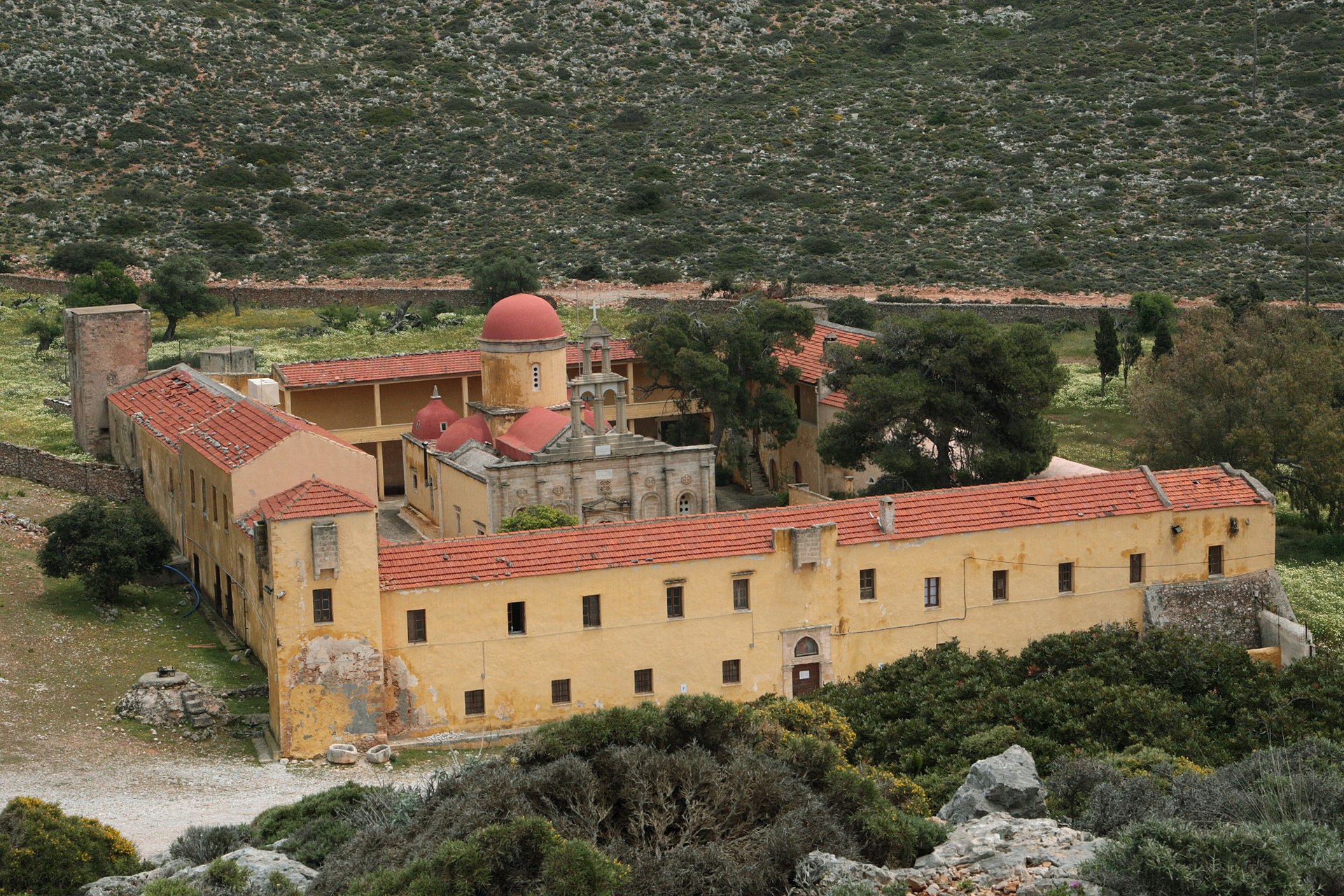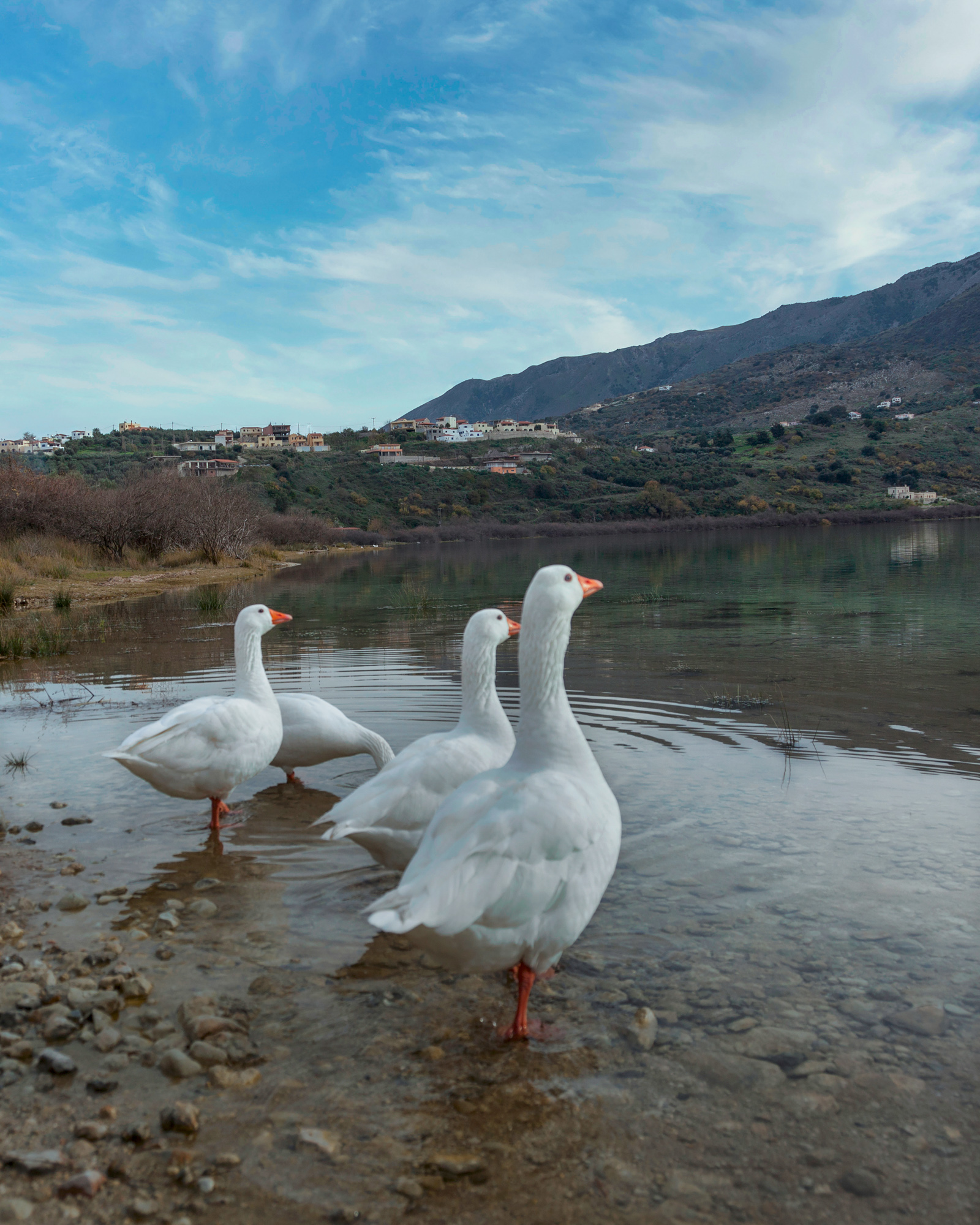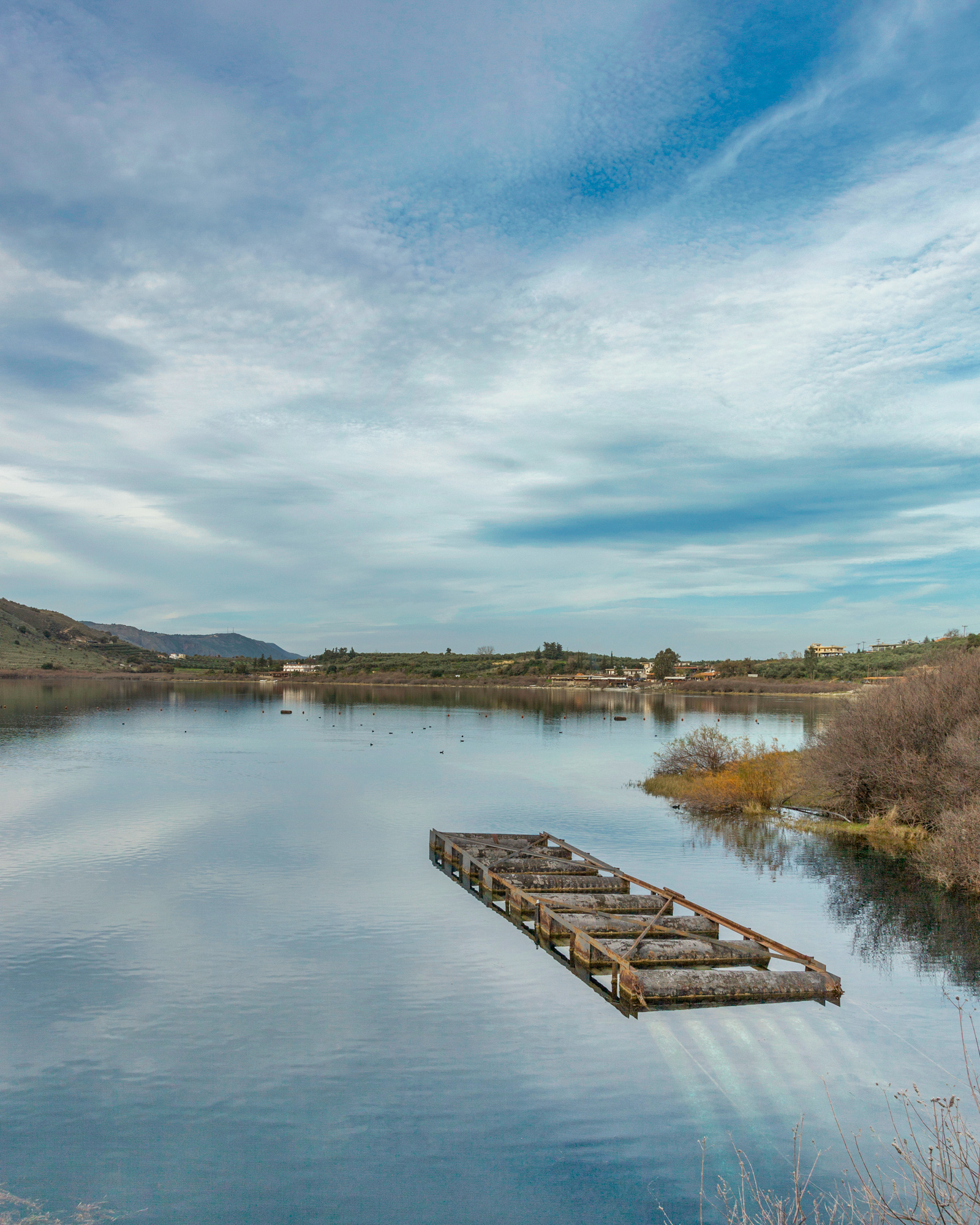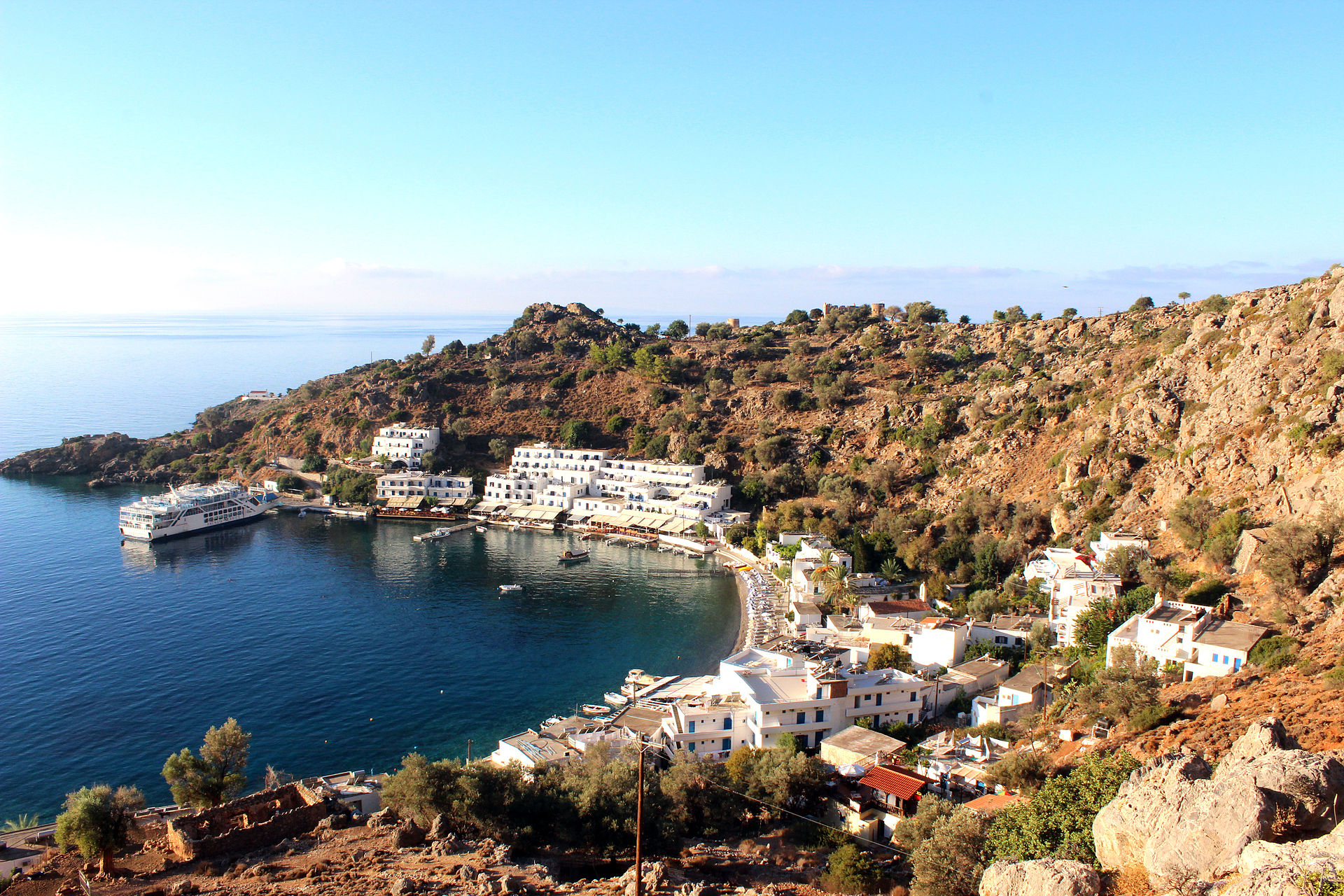As pretty as Chania is, and it is certainly a looker, the wider region of western Crete is a beautiful landscape, often unspoiled. Wild and rugged, the interior is overshadowed by the White Mountains and towns and villages tend to cling to the coast. Before tourism, agriculture was the main industry and fruit and olive orchards carpeted the fertile plateaus between the mighty canyons. On the south coast, Paleochora is the only town that could be described as a resort and it is still on a human scale. Elsewhere Ayio Roumeli and Loutro can only be approached by boat or on foot, and Hora Sfakion sees many passing through but few staying. The famous beaches at Balos, Elafonisi, Falassarna and Frangokastello are generally only visited as day trips.
The region of Chania is not only beautiful but it’s vast, covering 900 Sq miles. Hiring a sound car is a must to explore the area at your own pace.
Hora Sfakion
Capital of the remote and mountainous region of Sfakia, it lies on the south coast near the exit of Imbros gorge. It has two small harbours which serve the southern beaches and return the Samaria gorge hikers to buses that will take them back to the north. Famous as a centre of resistance to the Venetian and Ottoman occupiers, today it presents a more friendly face with several beaches nearby and plentiful hiking trails.
Agia Triada
At the northeastern corner of the Akrotiri headland, Ayia Triada, Holy Trinity, has extensive land holdings. The olive groves that surround and finance the monastery yield excellent oils and the shop is stocked with some of the finest the island has to offer. Founded in 1611, the monastery is a calming place to explore, following the flower-filled cloisters and visiting the ornate chapel. A handful of monks remain, manning the museum and working in the vineyards that produce award winning wines.
Balos – Gramvousa
You already know this beach from every postcard stand in Greece; along with Navagio in Zakynthos it is probably the most photographed beach in Greece. A riot of turquoise and white, the setting could be the Indian Ocean or Polynesia; an islet towers above powdery sand and vivid blue and green seas. The waters are shallow and warm while the sand in places takes on a pinkish glow from millions of tiny seashells.
56km northwest of Chania, the approach is along an 8km rough dirt track with the picture-perfect panorama at the end. There is a further half-hour descent to the beach itself and a longer return. An easier journey can be found through travel agents who operate buses to Kissamos where boats leave for Balos, stopping at the deserted Venetian fortress island of Gramvousa. There are a handful of umbrellas and sunbeds, and a small canteen for drinks, snacks and a toilet. Very popular, aim to arrive early in the morning or late in the afternoon to avoid the crowds.
Gavdos
The most southerly point in Europe, Gavdos is a small, rocky island ringed with beautiful beaches 65km from Paleochora. Difficult to get to and with little infrastructure, it attracts those who want to get away from it all. A permanent population of just 55 is spread out over three villages with Kastri being the island capital. There a handful of rooms to rent and most visitors free camp on the beach. Four hours by boat from Paleochora, Gavdos is an idyll for nature lovers with great hiking and swimming.
Gouverneto Monastery
This 16th century Venetian monastery is one of the oldest remaining religious communities on the island. Elaborate frescoes cover the courtyard chapel, while outside monsters are carved in relief in a baroque style. Inside the monastery is a tiny museum of ecclesiastical works and precious relics. A paved pathway descends past caves used as churches and the 11th century church of St John the Hermit. Follow the path down to the sea to a secluded cove, the aptly named Katholiko, ideal for a refreshing dip
Kalyves
A pretty seaside village in the Apokoronas region, Kalyves along with Almyrida and Plaka on Cape Drapanos have suffered from intensive development. A natural amphitheatre that hugs the shoreline, the beach is wide, long and well organised with tavernas and amenities nearby. If you are seeking a classic beach break with everything at hand, Kalyves may be your answer.
Kissamos
A seaside town 36km east of Chania, Kissamos has handled its tourist development well. Still recognisably Cretan in character, it is a flourishing agricultural centre that many visitors only pass through to take the daily cruises to Gramvousa and Balos. In fact, there are good beaches nearby, characterful local landscapes to explore and a pleasant seaside promenade lined with tavernas.
Lake Kournas
Surrounded by hills, Lake Kournas is the only freshwater lake in Crete. An hour long walk from Georgioupolis, it is a relaxing environment with plentiful wildlife, especially waterbirds. Small, sandy beaches form in summer and pedalos are available to rent to explore the Lake. There are plentiful tavernas and cafes around the shores to sit in and enjoy the views.
Lefka Ori
The White Mountains occupy much of the landscape with more than 40 peaks over 2,000 metres high, so named as the range remains covered in snow until May while in Summer the sun reflects off the limestone in an eerie white glow. The highest peak is Pachnes at 2453 metres and the mountains are dissected by over 50 gorges and gulches that run north to south. At the centre is a high plateau, Omalos, that served as a grazing ground for shepherds and as a base for rebels during the Ottoman occupation. There are few roads in and out but the landscape rewards keen hikers, especially in Spring when the slopes are filled with wildflowers.
Loutro
A small village at the end of Cape Mouri on the southern coast, Loutro was the site of the ancient city of Phoenix and served as the port of ancient Anapolis. Only accessible on foot or by boat, Loutro is a destination for those who want something different; there is little to do except explore the local beaches, hike the E4 trail and enjoy the sparkling clear waters.
Paleochora
77km south of Chania, Paleochora is set on a small peninsula on the southwest coast. Built near the ruins of the ancient city of Kalamydi, it was a favourite with the hippies in the 70’s but now it is one of the fastest growing towns in Crete. It has a harbour and a pebbly beach to the eastern side and a wide sandy beach to the west. Its narrow main street closes to traffic at night so that diners can spill out on the pavements and a lively, social atmosphere ensues. Capped by ruins of a Venetian Kastro, Paleochora has retained its Cretan rhythms despite development and it makes a good base to explore the south western Selinou province.
Read also:
First time in Chania: What not to Miss



